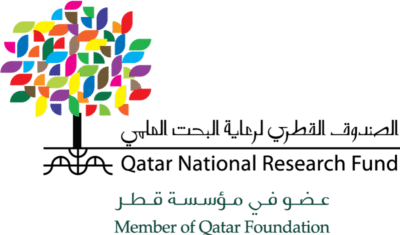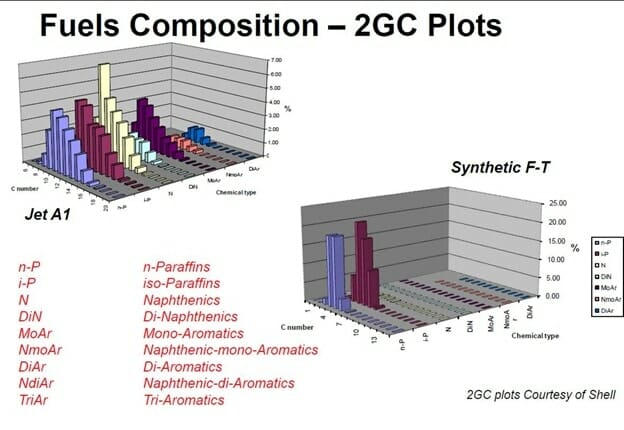UREP-14 Cycle
Funding Agency

Project No
UREP-14-051-2-014
Project Duration
July 2013-July 2014
Total funding
US$30,000; Prof. Nimir portion – US30,000
Project Title
Understanding the Role of Aromatics in Synthetic Jet Fuel- Experimentation, Statistical Analysis and Visualization
Project Description
The abundance of natural gas in Qatar and the rising price of crude oil incentivize the use of gas-derived synthetic jet fuel for commercial aviation. The conversion of natural gas to ultra-clean fuels and value-added chemicals is carried out through a catalytic conversion process known as Fischer-Tropsch synthesis (FTS), which is usually referred to as the heart of the gas-to-liquid (GTL) technology. Shell in collaboration with Qatar Petroleum built the world largest GTL Plant, the Pearl GTL plant in Ras Laffan, that produces up to one million tons of Synthetic Paraffinic Kerosene (SPK) annually from Qatari natural gas. SPK is a cleaner-burning alternative to conventional oil-derived jet fuel, due to its lower particulate and sulfur emissions. These environmental advantages are critical in the search for alternative aviation fuels as they are significantly enhancing air quality around airports. Conventional jet fuels contain aromatics that are essential in the fuel system- their presence seals O-rings that prevent leaks. SPK fuels
The aim of our project is to study the effects of different types of aromatic compounds on the physical properties of SPK fuel as per the aviation industry standard requirement for these properties (American Society for Testing and Materials (ASTM) D1655 and D7566). Our project consists of the experimental testing campaign that utilizes advanced analytical equipment located at the Fuel Characterization Lab at Texas A&M Qatar. This campaign will be followed by statistical analysis to identify correlations between SPK composition and properties for both linear and non-linear correlations. Several visualization models (both 2-

Major Accomplishments
Students
- Moiz Bohra (Master degree from Carnegie Mellon and
currently Ph.D. student at the Imperial College London under the Qatar Foundation Leadership Scholarship) - Muaz Selam (currently
master student at Texas A&M University at Qatar) - Mohamed
Hafis (currentlygraduate student inUSA ).
Peer reviewed journal publications, Book chapters, Conference proceedings
DOI 10.1002/ceat.201500513, (Impact Factor: 2.051)
3. Bohra M., Rahman J., Elmalik E., Blank J., Elbashir, N. O. (2012) “Development of visualization models to guide the design of future generations of synthetic fuels from natural gas” Qatar Foundation Annual Research Forum Proceedings, Vol. 2012; DOI: 10.5339/qfarf.2012.EEPS4 (presented by Mr. Bohra).
4. Moiz Bohra “Visualization of Composition-Property Relationships of Synthetic Jet Fuel with Aromatic Additives” Annual Meeting of the American Institute of Chemical Engineers (AIChE) Hilton, San Francisco, California, November 2013.
Won the First Place Best Poster Award in Energy, Fuels and Petrochemicals category presented to my student
5. Muaz Selam “Role of Aromatics in Synthetic Jet fuels”
Qatar Foundation Annual Research Conference 2014 (ARC’14)
Qatar National
Awards and Recognitions
1. Muaz Selam Best Research Award from the Chemical Engineering Program (April 2015).
2. Omega Chi Epsilon Best Poster Award for Mohammed Hafis and Muaz Selam, Dr. Elbashjr’s Undergraduate Research Students (October 2014).
3. Texas A&M University 2014 Richard E. Ewing Research Excellence Award to Moiz Bohra (May 2014).
4. The Harry West Award Plaques from the American Institute of Chemical Engineers (AIChE) for
5. The American Institute of Chemical Engineers (AIChE) 2013th First Place Poster Award under the category of Energy, Petrochemicals
6. Moiz Bohra and Asma Sadia (undergraduate research students of Dr. Elbashir team) published the first TAMUQ research paper in “The Exploration”, a highly selective journal of Texas A&M University about undergraduate students’ successful research activities. The paper entitled “Synthetic Jet Fuels Produced from Natural Gas” 2013, volume 5, pp. 11-12.



